Apply for a Permit
A permit is required to undertake a number of activities on or near your property.
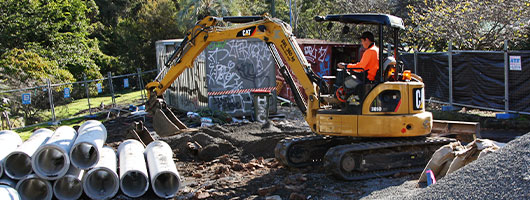
Earthworks involve filling or excavating land. You need to apply for approval unless the work is part of a development that has already been approved. Consent is required in order to address erosion and sediment control, tree loss and drainage impacts.
Do you have concerns about earthwork?
If you have concerns about earthworks occurring at a property, you may wish to lodge a request with Council to investigate.
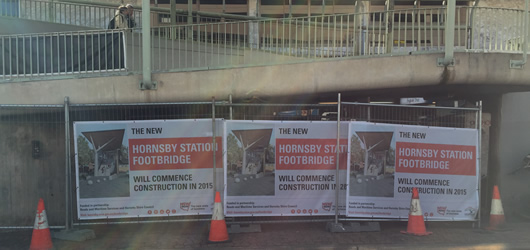
Hoardings provide safe temporary fencing to protect the public from the hazards of adjacent construction, excavation or demolition works. Hornsby Council classifies hoardings into three categories:
Class A
Class A Hoarding is a fence that is located no more than 300mm onto Council land.
Class B
Class B Hoarding is a solid structure and the largest type of hoarding able to be applied for. It is commonly required where overhead protection is needed for pedestrians utilizing the footpath, and may be with or without site sheds overhead.
Class C
Class C Hoarding is a fence or scaffolding that is located more than 300mm and up to 1800mm into Council land where the width is:
- at least 3500mm, or
- not more than half the width of the 3500mm, or
- not more than half the width of the footpath/footway whichever is the lesser.
Apply Now
Applying for a temporary fencing/hoarding permit can now be made online with the upfront payment of the non-refundable Permit Fee.
The total cost payable by the applicant will be based on Council’s Fees and Charges as applicable for the hoarding type. The actual hoarding type will be assessed on-site by Council’s Environmental Compliance Officer.

Council approval is required to place mobile cranes/plants on footpaths, nature strips, road shoulders, roadways or road-related areas. This includes any activity that involves hoisting goods over a pedestrian area, concrete pour.
The application requires a Traffic Control Plan, which can only be prepared by a Transport for NSW (TfNSW) certified designer for Traffic Guidance Scheme (TGS).
Crane Operators must hold the correct class of mobile crane high risk work licence for the crane they are operating.
Mobile cranes/plants on private property do not require an application or fee.
An Out of Hours Permit is required to carry out work on building sites outside normal permitted times. The normal working hours as approved by Council are:
- General
Monday to Friday, 7am-5pm
Saturday, 7am-5pm
Sunday and public holidays - no work permitted - Development Application conditions
Where a DA has been issued for the works, those conditions will dictate the permitted working hours.
Guidelines
Council recognises there are circumstances where it is necessary to carry out works on building sites outside of permitted times.
Each application will be assessed on its individual merit and circumstances, taking into account the effect on the safety and amenity to residents and general public. All applications must be approved by a Council Officer and will not automatically be granted approval.
Applications should be lodged at least 48 hours ahead of the scheduled works. This will allow time to consider the request and to notify local residents. Applications need to clearly outline the works and provide justification.
Common Reasons
- Concrete pours: Where there is an engineering requirement, frequency of concrete deliveries, weather and size of the pour itself.
- Tower crane installations and dismantle: For safety reasons, minimise traffic disruption / road closures and restricted travel times for heavy vehicles.
- Restricted delivery times and access: Restricted travel times for heavy vehicles, restrictions placed by other authorities or impacts emergency services such as hospitals.
- Business park or shopping precinct: For safety reasons and to minimise disruption to daily tenants.
Apply Now
Applying for an Out of Hours permit can now be made online with the upfront payment of the non-refundable Permit Fee.
The total cost payable by the applicant will be based on Council’s Fees and Charges as applicable for the works to be carried out. The permit will be assessed by Council’s Environmental Compliance Officer.
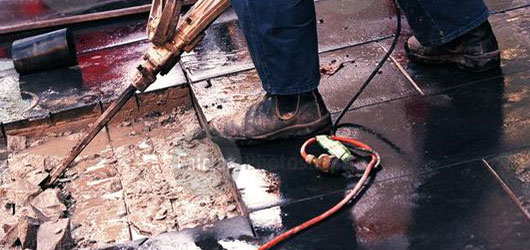
A road opening permit allows a person to dig into Council's assets, such as roads, footpaths and nature strips. The applicant must pay the cost of restoring the public asset once the work is finished.
Applying for a road opening permit can now be made online with the upfront payment of the non-refundable Permit Fee.
The total cost payable by the applicant will be based on Council’s Fees and Charges as applicable for the restoration of the asset type(s) disturbed by the road opening. The actual area of the asset type(s) to be restored will be assessed on-site by Council’s Restorations Supervisor.
See a complete listing of the current fees and charges including terms and conditions for Road Openings (PDF 117kb). Please note: Fees are per sq m unless otherwise indicated.
View Standard Conditions for Road Opening Permits – Plumbers and Drainers (PDF 22kb) for further information.
Click to view Road Opening Typical Details (PDF 71kb).
Click Survey Mark Status to view information provided by Land & Property Information, NSW Government.
Apply Now
An application and payment by credit card can be made online.
Once paid, the applicant will receive two emails:
- HSC online payment receipt
- Request confirmation (permit approval) – the applicant can commence work subject to the Road Opening Permit – Plumbers and Drainers standard conditions.
Permits are valid for six (6) months only, from date of payment.
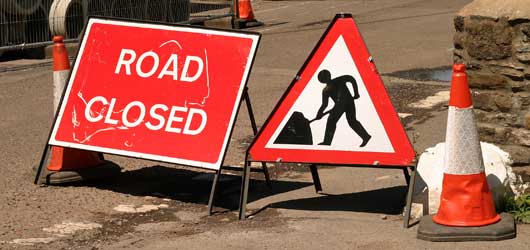
Council approval is required for temporary full and partial road / footpath closures.
IMPORTANT – Before applying for a Temporary Full / Partial Road / Footpath Closure, please read the following important notes.
- A Traffic Guidance Scheme (TGS) is to be provided, in accordance with AS 1742.3 requirements. This application cannot be processed unless the TGS is supplied. The TGS needs to be signed off by a Transport for NSW (TfNSW) certified designer for Traffic Guidance Schemes.
- A draft copy of resident/business notification must be attached to this application.
- A copy of Approval for Road Occupancy Licence (ROL) from TfNSW's Traffic Management Centre, if required, should be attached with this application. (Where applicable)
- Any application involving a full road closure and / or detour must be lodged with Council 28 days prior to works commencing.
- Council may seek a recommendation from the Local Traffic Committee before approving any road closure that is anticipated to have significant impact on public transport, residential amenity or limit retail access.
- Maximum of 28 continuous calendar days allowed for this permit.
For more information about Temporary Road Closure permits phone 9847 6615.
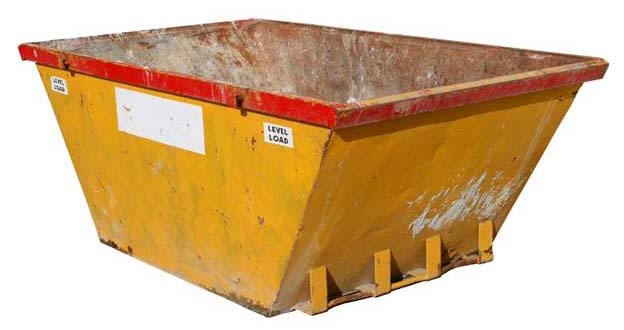
Skip bin permit
Council approval is required to place skip bins or containers on footpaths, nature strips and road shoulders. Containers placed on private property do not incur a fee and no application is necessary.
Acceptable Dimensions of Waste Container / Shipping Container
Acceptable dimensions for waste container / shipping container to be placed on road shoulders or footpaths, footways, nature strips or malls are as follows:
| Location | Length | Width | Height |
|---|---|---|---|
| On road shoulders | 6m | 1.5m-2.5m | 2.6m |
| On footpaths, nature strips or malls | 6m | 1.5-2.5m | 2.6m |
Tips to hiring a waste removal service or skip bin
When hiring a skip bin, order one with a cover or lockable lid to prevent other people from dumping their rubbish in it.
Did you know that both the owner of the waste (yourself) and the transporter (removal company) of the waste are legally responsible for proving the waste was transported to a lawful place?
If someone is transporting waste on your behalf, make sure you receive a quote before collection and keep records of:
- Who transported the waste
(company name, ABN, vehicle registration and driver details) - Date and time
- Description of waste
- Where the waste was transported to
(name and address of the contract person and place) - Copies of dockets/ receipts for disposal of the waste
The Disposing of Waste lawfully form (PDF 125kb) will help you keep track of the relevant details.
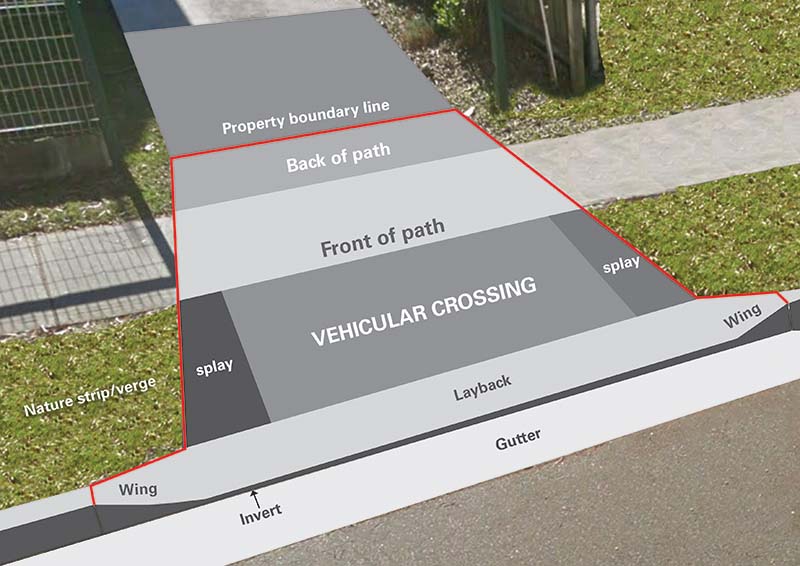
It’s important that all driveways and vehicular crossings are safe, while providing appropriate vehicle access. For works which include the construction of footpaths and/or kerb and gutter as part of a Development Application where a Construction Certificate is required, you must refer to Council's Planning Division for approval.
Application process (in sequence):
- As per the Development Application/Complying Development Certificate requirement the owner or the builder applies for boundary levels.
- The owner can request a quote from Council for the construction of the vehicular crossing or can obtain quotes directly from the authorised contractors when they are ready to construct the vehicular crossing.
View list of authorised contractors - If the owner or builder engages an authorised contractor other than Council, the authorised contractor lodges a separate application to construct vehicular crossing.
- If the Council’s quote is accepted, Council will arrange for the construction of vehicular crossing.
- A pre-inspection, formwork inspection and final inspection will be done by Council’s engineer. Should there be any rectification works needed the contractor will be advised and there will be an additional inspection to make sure the construction complies with Council’s standards.
- A final inspection will be done in 14 days after the concrete pour. A final approval certificate will be sent to the contractor if Council’s engineer is satisfied with the vehicular crossing. If the inspection results in a non-approval, re-inspections will be done every fortnight until it is completed to satisfy the Council’s standards.
Key aspects of vehicular crossing specification
Hornsby Shire Council’s Vehicular Crossings Specification ensures the design and construction of all vehicular crossings (including driveways) is safe and the work complies with Australian Standards and Council policies.
The Specification covers all aspects of vehicular crossing construction including the approval process. Some key points in constructing a vehicular crossing:
- Customer flow chart explains the process of vehicular crossing construction.
- Residential developments are permitted a maximum of one (1) vehicular crossing for vehicle access. Commercial/industrial developments will be assessed on their merits.
- Any redundant (un-used) vehicular crossing and/or layback must be removed and the kerb and gutter should be reinstated at the owner’s expense to comply with Council’s Standards.
- Technical details of vehicular crossings are specified. Please note if the vehicular crossing is constructed in a finish other than plain concrete, Council will not be responsible for any restoration or repair work in a finish other than plain concrete.
- Standard drawings show the types and dimensions of vehicular crossings and laybacks.
- Explains the process to become an authorised contractor. Please note that the authorised contractor should nominate at least one person from their company who has completed the ‘Implement Traffic Control Plans’ training course. A copy of the accreditation needs to be submitted with the Traffic Control Plans.
Read Full Vehicular Crossing Specification
Applications
Only Authorised Contractors can apply to construct a vehicular Crossing in Hornsby Shire. As part of the Authorised Contractor approval process, you will be registered for Council’s Online Services which will provide the link to the Application to Construct a Vehicular Crossing. Please click on the link below to login to your account using the login credentials provided to you at the time of authorisation and to apply to construct vehicular crossing.
Prior to applying, please read 1. Authorised Contractors Online Application Requirements by clicking the link below, then complete 2. Application to become an Authorised Contractor (ensuring to attach ALL items listed in the requirements document).
Boundary levels can be obtained by the owner or the builder for Development Application (DA) lodgement or Complying Development Certificate (CDC).
Apply for Boundary Levels for a DA or CDC
A separate application should be lodged by an authorised contractor to construct vehicular crossing at the time of vehicular crossing construction.
Obtain a quote from Council to construct a vehicular crossing.
- Who is responsible for the construction cost of a vehicular crossing?
The property owner is responsible for all construction and maintenance cost whether requested by owner(s) or is determined necessary by Council. Please refer to the NSW Roads Act 1993 – Sect 218 and 219.
- I’m living in a rental property with no concrete vehicular entrance, what can I do?
Initially all requests go to your agent. It is the owner’s responsibility to have a concrete vehicular access to the property. Refer to FAQ No. 1
- Will Council construct a vehicular crossing on the property owner’s behalf?
Yes, Council will construct a vehicular crossing, in concrete finish only, to standard design at the owner’s expense. Please refer to Section 3.5 of the Specifications for further information. Full payment is required prior to construction.
- Can anyone construct a vehicular crossing on the property owner’s behalf?
No. All works must be supervised by Council and should be carried out by one of Council’s Authorised Contractor or Council (obtain a quote).
- My vehicular crossing is breaking up. Do I need Council’s approval to re-construct the broken section?
Yes. All works must be supervised by Council and should be carried out by one of Council’s Authorised Contractors or Council (obtain a quote). If damage has been caused by a nature strip tree please write to Council’s Asset Maintenance Engineer, Asset Management & Maintenance Branch, Infrastructure and Recreation Division. If damage was caused by a public utility please refer to FAQ No.30.
- Are vehicular “tracks” permitted?
No they create trip hazards.
- What is the maximum gradient for a crossing?
1 in 4 (25%)
- Are ‘wedges’ in gutter permitted?
No. Wedges impede the flow of stormwater and if materials used are not secured they have the potential to be washed into stormwater drains which may result in blocking drains and cause flooding of properties and/or road.
- I live on a private road; do I need Council’s approval to construct a vehicular crossing?
No but Council’s Vehicular Crossing Specifications should be adhered to.
- How do I become an approved authorised contractor?
Refer to Section 3.10 of the Specification.
- I am a qualified concreter and have been doing concreting for years. Why must I become an approved Authorised Contractor with Hornsby Shire Council? No other council has asked for these requirements.
Under the WHS Act 2011, Council, as the land owner, is required to ensure the ‘subcontractor’ i.e. Authorised Contractor provides a written ‘Safe Work Method Statement’ before commencing any ‘high risk construction work’ i.e. any hazardous construction work that has the potential to harm the health and safety of people or to damage plant and equipment”. Refer to the SafeWork NSW website for further information or call 13 10 50.
Authorised Contractors need to know how to prepare a suitable Traffic Control Plan. Refer to the Roads and Maritime Services NSW (RMS) website – ‘Traffic Control at Work Sites’ publication for further information or call 1300 828 782.
Under the NSW Protection of the Environment Operations Act 1997(POEO) it is illegal to pollute or cause or permit pollution of waters. Under the Act, 'water pollution' includes introducing litter, wash water, soil, debris, detergent, paint, cement slurry, building materials etc. into waters or placing such material where it is likely to be washed or blown into waters or the stormwater system or percolate into groundwater. The Authorised Contractors must also know how to prepare an Erosion and Sediment Control Plan.
- Can I relocate my existing vehicular crossing?
Please submit your request to ‘Council’s Engineering Assistant, Design and Construction Branch, Infrastructure and Recreation Division’. Subject to approval, the existing crossing will have to be removed and new kerb and gutter reinstated, in conjunction with the new crossing construction. All costs are at the property owner’s expenses.
- Do I need Council’s approval to concrete my internal driveway?
Contact Council’s Planning and Building Branch on 9847 6666 for all internal driveway requirements, especially where retaining walls are required.
- My property has a wide frontage, how many vehicular crossings per property does Council allow?
Residential properties are permitted a maximum of one (1) vehicle crossing for vehicle access. Commercial/industrial and multi unit properties are subject to approval. Please write to ‘Council’s Engineering Assistant, Infrastructure and Recreation Division’ with any additional requests. Please refer to Council’s Sections 2.2 of this ‘Specification’.
- Should I obtain my boundary levels prior to any internal driveway construction?
Yes, this will determine your internal property level and garage floor level, thus allowing for a smooth transition when entering and exiting your property without scraping the underside of your vehicle.
- My car scrapes when entering and/or exiting my driveway entrance and I have an existing concrete vehicular entrance? What do I do?
How old is your driveway? Have you changed your vehicle recently? Your vehicular crossing levels may need to be adjusted to suit. All costs are at the property owner’s expense. All works must be supervised by Council and carried out by an approved Council’s Authorised Contractor. Please write to ‘Council’s Asset Maintenance Engineer, Infrastructure and Recreation Division’.
- My street was resurfaced recently and now my car scrapes when entering and/or exiting my vehicular crossing?
Please write to Council’s Asset Maintenance Engineer Infrastructure and Recreation Division.
- What are Council’s minimum and maximum widths at property boundary and kerb?
A minimum of 2.5 metres and a maximum of 3.5 metres wide at the property boundary for single and a minimum 3.5 metres to a maximum 4.5 metres wide at the property boundary for double. Please refer to Council’s Sections 2.3.4 of this ‘Specification’.
- I have a double garage; can I widen my vehicular crossing to suit?
Please refer to Sections 2.2 and 2.3.4 of the Specification. Please submit all requests in writing to ‘Council’s Engineering Assistant, Design and Construction Branch, Infrastructure and Recreation Division’.
- Are ‘wedges’ in gutter permitted?
No. Wedges impede the flow of stormwater and if materials used are not secured they have the potential to be washed into stormwater drains which may result in blocking drains and cause flooding of properties and/or road.
- My vehicular entrance enters and exits from a State Road. Do I need to contact NSW Roads and Maritime Services (RMS) for additional consent?
Yes. Call RMS Land Use Development Staff on 131 782 for further information. All works must be supervised by Council’s Engineering Assistant, Infrastructure and Recreation Division and carried out by an approved Authorised Contractor.
- What is an illegal crossing?
An illegal crossing is one that hasn’t had prior Council approval or is still in it natural form i.e. earth nature strip. Where action is effected in such a way as to cause gutter blockages and / or public danger (trip hazard), notice will be served on the owner to remove, reinstate or construct an approved crossing. If a reply is not received within 28 days, Council will take action to carry out minimum requirements to rectify problem and the owner debited with costs. Please refer to the NSW Roads Act 1993 – Sect 218 and 219. Council strongly recommends that the property owner constructs a proper concrete vehicular crossing.
- My contractor is insisting payment, how do I know if Council has carried out a ‘Final Approval?
Request to see the ‘Final Approval Slip’ issued to your Contractor by Council.
- What do I do if I have a complaint about a contractor?
Please submit all complaints in writing to ‘Council’s Engineering Assistant, Infrastructure and Recreation Division’. All claims will be investigated and formerly replied to both the compliant and contractor concerned.
- What type of finishes and colour is acceptable?
Laybacks can only be constructed in plain concrete. For all other finishes and colour refer to Sections 2.3. of this ‘Specification’.
- When is a standard and heavy duty crossing required?
Standard is generally used for light traffic vehicles. Heavy duty is usually constructed for commercial and industrial purposes or where vehicles over 5 tonnes will be regularly using vehicular access. Please refer to Section 2.3.3, 2.3.4 of this ‘Specification’.
- I live on a busy street and find it difficult to enter by driveway safely. Can I alter its shape?
This request is subject to approval. Please submit request in writing to Council’s Engineering Assistant, Design and Construction Branch, Infrastructure and Recreation Division.
- Potholes/depressions are forming in the earth nature strip at the entrance of my vehicular access. Can Council fill in these potholes/depressions?
Yes, you can submit a request to Council’s Customer Service Team on 9847 6666. Council strongly recommends that the property owner construct a proper concrete vehicular crossing.
- My vehicular crossing is earth (natural form) and there is no Council drainage in my street. Every time it rains, dirt and gravel is washed into my property from the street. How do I prevent this from re-occurring?
Council may recommend the property owner to construct a concrete crossing at the owners’ expense to prevent re-occurrence.
- A public utility has dug up my driveway. How do I have this damage reinstated?
All requests should be in writing to ‘Council’s Restoration Supervisor, Asset Management & Maintenance, Infrastructure and Recreation Division’. Please note Council only reinstates in plain concrete, regardless of the type of finish on the remainder of the crossing. Council can only arrange reinstatement after the responsible public utility has submitted a restoration order to Council. In the meantime should you experience any backfill subsidence prior to replacement please contact responsible Public Utility Authority. Please refer to Section 3.17 of this ‘Specification’.
- The Council is doing construction work in my street and I have received a quotation for a vehicular crossing construction. What do I do?
If you accept Council’s quotation, please note that quote is only valid whilst construction crews are currently working in your street. Full payment is required prior to construction commencing.
- How do I obtain vehicular crossing design levels at the front boundary from Council for the design on the internal driveway Development Application (DA)?
Please go to Apply for Boundary Levels.
- Can I have a bituminous crossing instead of concrete?
A bituminous crossings is subject to approval and only permitted in rural areas. Please submit request in writing to Council’s Engineering Assistant, Design and Construction Branch, Infrastructure and Recreation Division.
- Can I get access to park my car inside my property on the lawn?
No. Access is only available for a garage or carport.
- There is a tree very close to my proposed driveway. Can I still construct the driveway in that position
The owner must first obtain prior approval from Council’s Tree Management Section prior to vehicular crossing construction.
Council approval is required for a Work Zone
IMPORTANT – Before applying for a Work Zone permit, please read the following important notes.
- Works Zones are provided to facilitate the efficient and safe operation of construction projects while minimizing disruption to traffic and pedestrians. They are provided in accordance with the Road Transport Act 2013. Rule 181 of the Road Rules 2014 permits a driver to stop in a Work Zone if the driver is driving a vehicle that is: engaged in construction work in or near the Work Zone or dropping off or picking up passengers.
- It is recommended that the road be at least 8 metres wide from kerb to kerb to accommodate a ‘Works Zone’. The applicant shall confirm the required width of road prior to submitting the application.
- The Work Zone application fee* (GST not applicable) is non-refundable and must be paid in full before a permit is considered. For Council’s current Fees and Charges (*subject to change) please visit our Fees and Charges page.
- A one-off charge* (incl. GST) will be charged by Council for the installation and removal of the Traffic Signs (two per charge) after approval of Work Zone application. For Council’s current Fees and Charges (*subject to change) please visit our Fees and Charges page.
- The use of public roadway for work zone purposes – charged per linear metre per week* (GST not applicable). For Council’s current Fees and Charges (*subject to change) please visit our Fees and Charges page.
- The applicant is responsible for maintaining the approved Works Zone signs installed by Council around the building site.
- A Traffic Guidance Scheme (TGS) is to be provided, in accordance with AS1742.3 requirements. This application cannot be processed unless the TGS is supplied. The TGS needs to be signed off by a Transport for NSW (TfNSW) certified designer for Traffic Guidance Schemes.
- A draft copy of resident/business notification must be attached to this application (where applicable).
- A copy of Approval for Road Occupancy Licence (ROL) from TfNSW Traffic Management Centre, if required, should be attached with this application (where applicable).
- Work Zone must conform to the hours of demolition or building works stipulated by the Council on the relevant development consent. These hours of operation would normally be 7.00am to 5.00pm from Monday to Saturday.
- A copy of the company’s public liability insurance policy is required for the amount of $20 million, indemnifying Hornsby Shire Council in the event of any member of the public suffering injury by reason of the works
- Council will seek a recommendation from the Local Traffic Committee before approving any Work Zone that due to impact on public transport, residential amenity or limit retail access. The approval process is approximately 28 days.
Fee description | No. of Linear metres | No. of weeks | Charge as at 1 July 2024 | Calculation of fee total |
Construction Zone Signs - per linear metre per week (The use of public roadway for work zone purposes) | 12m | 12w | $22.50 (per linear metre per week) | 12m x 12w x $22.50 = $3,240 |
For more information about Work Zone permits phone 9847 6615.







